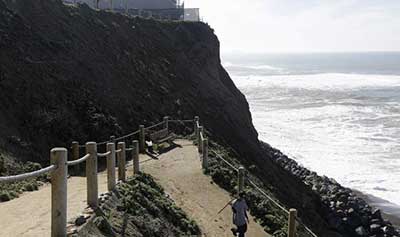Date: 22/05/2023
Relevance: GS-1: Important Geophysical phenomena such as earthquakes, Tsunami, Volcanic activity, cyclone etc., geographical features and their location-changes in critical geographical features (including water-bodies and ice-caps) and in flora and fauna and the effects of such changes.
Key Phrases: El Ninos, Droughts, Floods, Heat Waves, Macroeconomy, Hurricanes, National Oceanic and Atmospheric Administration, Climate Change.
Context:
- According to a recent study, the economic impact of El Niño events is far more substantial than previously believed, reaching trillions of dollars.
- The most recent powerful El Niño event occurred in 2016, and now another one is brewing, raising concerns about its potential impact.
Introduction:
- El Niño events have long been recognized as significant climate
phenomena with global implications.
- However, a new study published in the journal Science reveals that the economic costs associated with El Niños are far greater and longer-lasting than previously believed.
- The study, conducted by researchers from Dartmouth College, challenges the prevailing notion that El Niños are relatively benign and may even provide certain benefits.
- With a new El Niño brewing, scientists warn that the potential costs could reach astronomical figures, necessitating a deeper understanding of these events and their economic repercussions.
The True Cost of El Niño
- According to the Dartmouth study, the average El Niño inflicts approximately $3.4 trillion in damages on the global economy. To put this into perspective, the powerful El Niño of 1997-1998 resulted in a staggering $5.7 trillion in costs.
- These estimates significantly surpass previous assessments, such as the
World Bank's estimation of $45 billion in damages for the 1997-1998
events.
- The Dartmouth team contends that their research differs in its comprehensive consideration of the long-term economic scars left by El Niños.
- Macroscopic Implications and Long-Term Effects: The researchers
argue that the effects of El Niño reverberate throughout economies for
extended periods, potentially lasting a decade or more, and sometimes
indefinitely.
- The scars borne by economies result from the diversion of resources away from technological advancements and innovation, as funds are channeled into recovery and rebuilding efforts.
- The opportunity costs incurred during this process are significant and have long-lasting implications for progress and growth.
Exploring the El Niño phenomenon
- El Niño is the warming of sea waters in the Central-east Equatorial Pacific that occurs every few years.
- During El Niño, surface temperatures in the equatorial Pacific rise, and trade winds — east-west winds that blow near the Equator — weaken.
- Normally, easterly trade winds blow from the Americas towards Asia. Due to El Niño, they falter and change direction to turn into westerlies, bringing warm water from the western Pacific towards the Americas.
- Deeper waters are usually more nutrient-rich, but upwelling
(where deeper waters rise towards the surface) is reduced under El Niño,
in turn reducing phytoplankton off the coast.
- Fish that eat phytoplankton are affected, followed by other organisms higher up the food chain.
- Warmer water also carries tropical species towards colder areas, disrupting multiple ecosystems.
- Heat redistribution on the surface impacts airflows above the ocean. While easterly winds are dry and steady, Pacific westerlies are warmer and moisture.
- Since the Pacific covers almost one-third of the earth, changes in its temperature and subsequent alteration of wind patterns disrupt global weather patterns.
- El Niño is a loose translation of “little boy” or even “Christ child” in Spanish. South American fishermen are believed to have noticed unusually warm water in the Pacific Ocean in the 1600s. Earlier, it was also called “El Niño de Navidad,” since it peaks around December.
Regional Impacts of El Niño
- El Niño's influence extends across the globe, affecting various regions differently. While its most pronounced impacts occur during the northern winter, it also influences hurricane activity in the Atlantic, reducing it.
- It leads to increased precipitation in the southern and western parts of the United States, Peru, Uruguay, Argentina, parts of Southeast Asia, and some regions of east central Africa.
- Conversely, it induces dryness in southeast Africa, southern Asia, northern Australia, and the Amazon, often resulting in heightened wildfire activity.
- Furthermore, El Niño brings warmer temperatures to much of Asia, the American Pacific Northwest, and Australia.
El Niño in Context: A Key to Understanding Climate Change
- Given the similarities between the impacts of El Niño and those of
global warming, studying the economic damage caused by El Niños is crucial
to comprehending the broader consequences of human-induced climate change.
- The Dartmouth researchers argue that our economies are ill-prepared and ill-adapted to the existing climate variability.
- As El Niño events become more frequent and severe, it is imperative to address these vulnerabilities and mitigate potential losses.
Conclusion:
- While the Dartmouth study has garnered support from climate scientists, some economists remain skeptical. They question the validity of the study's damage estimates, deeming them excessively large.
- A macroeconomist at the University of Cambridge suggests that not all countries suffer from El Niño; in fact, some experience growth-enhancing effects.
- His research on 21 national economies during past El Niños demonstrates this divergence. However, it is important to note that the Dartmouth study analyzes the global impact.
Source: The Hindu
Mains Question:
Q. Considering that El Niños occur every three to five years and vary in strength, how can we mitigate the financial repercussions of the next impending event, particularly since the last strong El Niño occurred in 2016? Discuss (250 words).







